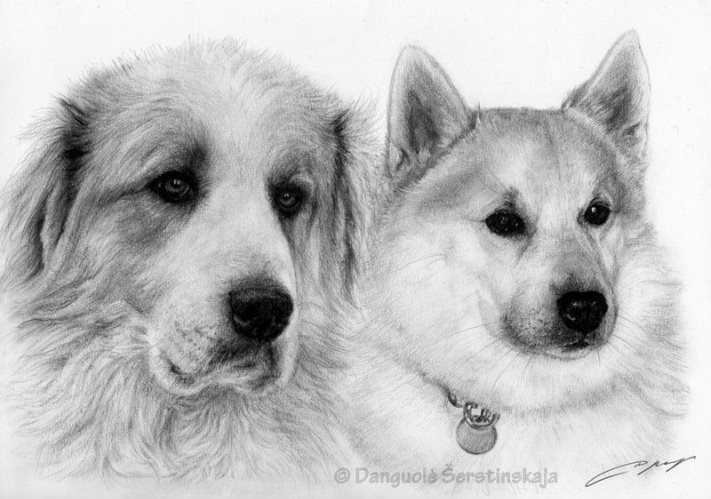
Why do we love northern breeds? Because they’re living examples of dogs that have been developed for a reason. To perform their tasks effectively – and despite the environment – certain components were key.
Dewlaps are not discussed in many northern breed standards, but they exist in many of these breeds. The loose skin offers a layer of fat that serves to protect the trachea in extremely cold air, air that warmed to an above-freezing temperature before it gets to the lungs lest it damage delicate lung tissue. Maxwell Riddle and Beth Harris discussed this in their book, “The Complete Alaskan Malamute.” They wrote, “The neck is furnished with a prominent dewlap which is more noticeable in males. This fatty dewlap warms the air descending to the lungs. When a dog pants, air descends directly to the lungs. The dewlap prevents the shock of cold air from being taken directly into the body. The shock of cold air would injure the delicate lung tissues….When in repose, the dewlap is laid across the thorax, protecting the vital heart and lung area from the cold. Many dogs also fold their forelegs under the dewlap when in repose. Thereby keeping the forelimbs warm and preventing muscle damage that would occur should they become cold and the animal be required to work immediately.”
Few dogs now work in the Arctic, so a dewlap isn’t as important to their survival, and since it’s not mentioned in some standards, breeders may not feel compelled to maintain this characteristic once so important in the dogs in their native environment. It’s possible it may even disappear, but we’re not sure this is a good idea. What do you think?
Image: Pyrenean and Norwegian Buhund
Charcoal Painting by Danguole Serstinskaja
www.petdrawings.net
https://www.facebook.com/

interesting post, I fancy hounds. I’ve always been told that the hound breeds had dewlap to protect the throat in an encounter with the game. Sadly it is being bred out of many breeds. example that comes to mind is the Bluetick coonhound. The Blueticks of yesterday, had more loose skin, more like a blood hound. The loose skin protected the hound from many injuries in the field, from bites to running through rough terrain. The loose skin can roll with the punches, or fill a mouth before any serious damage is caused to the vitals.
Wow! I had never heard this, which is a little surprising since I have a weakness for the northern breeds.
It’s very cool (ha, a pun) information! Maxwell Riddle and Beth Harris are such respected experts, Jan, that had the information come from anywhere else, we would have been equally skeptical.
While you have a Pyr illustrated in this article, it is important to note that the AKC breed standard for the Pyr specifies that it have ‘minimal dewlap’.
Duly noted, Tracy, thanks for pointing it out.